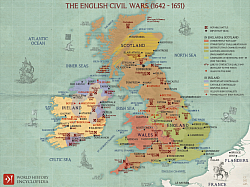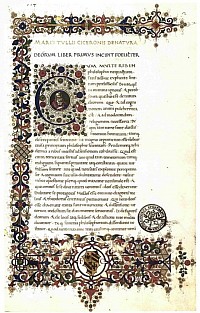Mysterious & Historical Locations -Articles, Audio, Video, Podcasts, Gallary of ancient Maps & more : - ACROSTIC SONNET
"Unraveling the Mystery of NEMA" "Exploring Neo - seepism (ubiquitous) and Language"
" BINGO ! FIND HIS$ NEMA " HECK$ NEOLOGISM OOZE
HEARSAY DODDLE BOW , UFORTUNATELY MINDLESS OF ANIMISM RATHER NICETY STRIDENT GLOBULE TOE ;
ASSIDUOUS DODDLE BOW , REVITALIZE THAT REPARATION THE ENVIRONMENT GLOBULE TOE ;
MUNDANE ANIMALITY DOODLE BOW, DEBILITY EMBODY INTUITIVE GLOBULE TOE ;
GALLOWS HUMOUR DODDLE BOW , OVERGEALOUS DESPOILED IN SPAN OF GLOBULE TOE ;
LAG INTRASIGENT DODDLE BOW , KINGPIN ESPLANADE NEXT TO NO GO AREA A SOOTH SAYER GLOBULE TOE ;
PINNA RATHER ACHILLIES HILL DODDLE BOW , AS RUDDY TAN INSTEAD OF BLISTER A TAG INFRACTION VANDAL EX- GRATIA GLOBULE TOE ;
SOLITUDE DODDLE BOW , TRANSIT RAFFISH INCONSTANT AS A GAMEBALL TO EMOLLIENT AND NASCENT TIMBRE GLOBULE TOE ;
FLOG A DEAD HORSE DODDLE BOW , ERODED TOP UP CONDIDENCE AND INCIDENCE STUB HINDSIGHT GLOBULE TOE ;
APPRISE STRING ARM DODDLE BOW , TACIT HAMPER ENNUI RISE UP LIMPID EXPERTISE TO GLOBUL TOE ;
JUMP THROUGH HOOPS (Leapfrog) ASPIRANTS DODDLE BOW , ESCHEW ESCAPEMENT AS NEPOTISM GLOBULE TOE ;
BRIC-N-BRAC OBSCENE DODDLE BOW , KEN ENAMOUR TO THE NEXT DOOR GLOBULE TOE ;
INFER SAG DODDLE BOW , PONCE IRE REVULTIONS INFECT TEENAGER GLOBULE TOE ;
INCURSION FROSTBITE DODDLE BOW , NUMBNESS OVERPLAY YOUR HAND FOR TITIBATING GLOBULE TOE ;
IMPROPEIETY NATIVE DODDLE BOW , LET-UP ERGO TOMFOOLARY TONGUE-TIED EQUIVOCAL RILE SOT GLOBULE TOE ;
ACROSTIC PARAGRAPH -
" HUMANS ARE MADE IN GOD'S LIKENESS , PARTITIVE STRINGENT , FETISH ; AS THE RULE HAD - BEEN BROKEN IN SPIRIT IF NOT IN LETTERS . "
by WISHAL JAIN
" HYDR'O'XY'GEN' "
¤ 3I/Atlas Interstellar Visitor fastest co.et ever recorded. Images 01) , 02) , 03) , 04) ,
¤ The first unknown interstellar Visitor is an Oddball. 1I / Oumuamua . Images 01) , 02) , 03) , 04)
¤ 2I / Borisov. Images 01) , 02) , 03), 04) , 05) ,
¤ C / 2019 Y4. Images 01) , 02)
★ LTT 9779 b with Albido [Day & Night Contrast , high Mirror reflectiveness] of 0.731 ± 0.11 % & Metallic atmosphere of Iron,Titanium and Silicon (creates Clouds of Titanium & Glass) in gas form , Images 01 , 02

★ DD : Disclaimerized Depiction ; ★ FINDING NEMA Missing in Red / Black Sea of Milky way.🦆 Guillin :- Animal that attract and deliver their breath more strongly. 🦆 Lubbock :- Colour ,scent, and honey are the three charecteristics by which insects are attracted to the flowers . 🦆 Burton :- Attraction is a ministering faculty , which as a loadstone doth with iron , draws meat into the stomach or as a lamp does oil. 🦆 Scoffern :- Attraction , which is effective only at insensible distances ..has been called contiguous attraction 🎮 H. More songs of soul :- The nearer you place lead to the centre , the swifter the Ballance moves. 🎮 Lockhart Scott :- ' Balaam ' is the can't name for asinine about monstrous productions , of nature and the like, kept standing in type to be used whenever the real news of the day leave an awkard space that must be filled up somehow. 🦃 Balaam :- A non-Israelite prophet in the Hebrew Bible, known for blessing Israel against his employer's wishes and for an encounter with a talking donkey • God used Balaam to pronounce blessings on Israel (Old Testament) Adam's wife in Judeo-Christian mythology: the first woman and mother of the human race; "🦆GOD CREATED EVE FROM ADAM'S RIB 🦆" and placed Adam and Eve in the Garden of Eden.
LTT 9779 b was officially named Cuancoá in 2022 by the International Astronomical Union, Cuancoá is a word that refers to the morning star in the Uwa language (Tunebo). Cuancoá's star was named Uúba after the word for "star," "seed," and "eye" in the same language.LTT 9779 b is one of the few known planets in the Neptunian desert. It is highly reflective, with an albedo of 0.73±0.11.Ultra-hot Neptunes are hot Neptunes with very extreme high temperature ranges. LTT 9779 b is the first ultra-hot Neptune discovered with an orbital period of 19 hours and an atmospheric temperature of over 1700 degrees Celsius. Being so close to its star and with a mass around twice that of Neptune, its atmosphere should have evaporated into space so its existence requires an unusual explanation. A candidate planet around Vega slightly more massive than Neptune was detected in 2021. It orbits Vega, an A-class star, every 2.43 days, and with a temperature of about 2500 degrees Celsius would be the second-hottest planet on record if confirmed.💥 French phrase, En ma fin est mon commencement ("In my end lies my beginning"),Polar bear north pole & penguins south pole two enemies never meet each other. ☆ dry up Niagara fall ☆Baker"s dozen feb = 🐜 day
NASA release image of Butterfly Star. • To whom we beneath & what is benezth us or is it like the singularity of particle by / over in mixed fraction [as 2 integer 2 by / over 4].
QSO J0529−4351 (SMSS J052915.80−435152.0) is a quasar, 12 billion light-years away in the Pictor constellation, notable for being the most luminous object ever observed at roughly 500 trillion times the luminosity of the Sun. The black hole at its centre has a mass of approximately 17 billion solar masses, and accretes around one solar mass per day. In a Gaia DR3 data set published on 13 June 2022, QSO J0529−4351 was assigned a 99.98% probability of being a star in the Milky Way via an automated analysis.[1] However, the quasar was identified as one using the Very Large Telescope of the European Southern Observatory; the discovery was announced on 19 February 2024.brightest of its kind most luminous object ever observed contains fastest growing black holeThe mass of the black hole is estimated at 17 billion solar masses, and the total bolometric luminosity is 1048.37 ergs per second.In September 2025, the black hole was found to have a mass of only equivalent to one billion suns, making it much smaller as expected, compared to the previous observation in 2024.
🌹 Brown (old french ≈ Braon ≈ fleshy part of the leg) = Color of low brightness and saturation, like wood or earth. 🧙♀️ Gusty Person :- Cause –> Result =≥ Casuistry : She did, he verbalize ; $he hystercized. # Glossy belittled :- The left hearted hand said to right elbow end , you are hueful.
🦸🏽♀️ DD Depiction Disclaimerized 🦸🏽♀️ PRIDE = Group of Lions. 🧙♀️ The square circle ≈ E$q ≈ $? ≈ A title of respect for a member of the English gentry ranking just below a knight; placed after the name. ⛔ 2} 🦜≈ ⏺️ ≈ @bi$ ≈ Diatribes ; Diatomos ; Biformed (Janus ≈ Roman mythology) the Roman god of doorways and passages; is depicted with two faces on opposite sides of his head. ) ; Dialectic ; Dilektike tekhne (Art of debate) ) ; 🟢 3} 🦚 ≈ Vegetation {An abnormal growth or excrescence (especially a warty excrescence on the valves of the heart)} [(pathology) an abnormal outgrowth or enlargement of some part of the body] ≈ Extended Middle Finger(or any other extended organ) touching the circle & square both. ≈ 4} 💠🦉≈ Dislocation of leg / limb below knee or Foot from Ankle. ≈ Transfiguration ≈ A striking change in appearance, character or circumstances.(= metamorphosis). ⭕ A patter of six feet for Triplet.
🧢 Pre - rogative. Scott :- An old fashioned bonnet called a bon-grace. 🧙♀️ Hilbert's paradox of the Grand Hotel: If a hotel with infinitely many rooms is full, it can still take in more guests. 👉 🧙♀️ Disclaimerized Depictions :- Louse : pediculous Humenus , cootie : I ring the possession for investigating possibility of tourists, figure it out, the figures 101325, 101527, 91822, 121928 , on Von Luschan's chromatic scale , Miss gray a bug a day manifesting soap opera on radio titled Particle of senses 🪽 (Heat - 🍎 🦚) for sinners in the sun at fixation (plastination) to Apoptosis , charged for. Espionage against Double Blind ESP , sightseeing, 2nd sight, 4knowledge. 🎥 Highly Dangerous Directed by Roy ward Baker 📝 Eric Ambler 💫 Dane Clark & Margaret Lockwood on 6 December 1950.
Unvoiced , unnoticed , unconsidered :-
★ Tropisms can be regarded by ethologists as taxis (directional response) or kinesis (non-directional response).
‡ Christina revealed in her autobiography that she felt "an insurmountable distaste for marriage" and "for all the things that females talked about and did." She once stated, "It takes more courage to marry than to go to war."
🦆 Blue stockings :- The central virtue is The basis of all morality in a Sentence or in a sWords.
‡ Christina, the Queen of Sweden
🦆 "Give me the splendid silent sun with all his beams full-dazzling!' (Walt Whitman, "Give Me the Splendid Silent Sun")
🌞 The phrase "the empire on which the sun never sets" (Spanish: el imperio donde nunca se pone el sol) has been used to describe certain global empires that were so territorially extensive that it seemed as though it was always daytime in at least one part of their territory.
The concept of an empire ruling all lands where the sun shines dates back to the Egyptians, the Mesopotamians, the Persians, and the Romans. In its modern form, it was first used for the Habsburg Empire of Charles V, who, as Duke of Burgundy, King of Spain, Archduke of Austria, and Holy Roman Emperor, attempted to build a universal monarchy. The term was then used for the Spanish Empire under Philip II and his successors, when it reached a global territorial size, particularly in the 16th, 17th, and 18th centuries. It was also used for the British Empire, mainly in the 19th and early 20th centuries, a period in which it reached a global territorial size. In the late 20th century, the phrase was sometimes adapted to refer to the global reach of American power.
† Simple visit of curtsey :- Any Propositions like landslides or explosions via sound [echoes] that feels unlucky being 13th are not permitted to privilege of such familiarity that breeds contempt for to whom so ever it may concern as the years beings of 12 months on the Nine months side. -- The Queen of Sheba .
🦆 Despised, if ugly; if she's fair, betrayed.
— Mary Leapor, "Essay on Woman" (1751)
The Bermuda Triangle, also known as the Devil's Triangle, is an urban legend focused on a loosely defined region in the western part of the North Atlantic Ocean where a number of aircraft and ships are said to have disappeared under mysterious circumstances. e.g.HMS Atalanta,USS Cyclops,Carroll A. Deering,Flight 19,Star Tiger and Star Ariel,Douglas DC-3,Connemara IV,KC-135 Stratotankers .
The Devil's Sea [Japanese: 魔の海, Hepburn: Ma no Umi(translated as devil sea, troublesome sea, or dangerous sea)], also known as the Devil's triangle, the Dragon's Triangle, the Formosa Triangle and the Pacific Bermuda Triangle, is a region of the Pacific, south of Tokyo. The Devil's Sea is sometimes considered a paranormal location, though the veracity of these claims has been questioned.
Marie Byrd Land (MBL) is an unclaimed region of Antarctica. With an area of 1,610,000 km2 (620,000 sq mi), it is the largest unclaimed territory on Earth. Area map of : Marie Byrd Land, Etymology: Wife of explorer Richard E. Byrd , Coordinates : 80°S 120°W ,Continent : AntarcticaIt was named after the wife of American naval officer Richard E. Byrd, who explored the region in the early 20th century. The territory lies in West Antarctica, east of the Ross Ice Shelf and the Ross Sea and south of the Pacific Ocean portion of the Antarctic or Southern Ocean, extending eastward approximately to a line between the head of the Ross Ice Shelf and Eights Coast. It stretches between 158°W and 103°24'W. The inclusion of the area between the Rockefeller Plateau and Eights Coast is based upon Byrd's exploration. Marie Byrd Land is covered by the vast West Antarctic Ice Sheet (WAIS). The WAIS in Marie Byrd Land drains off the continent to the east into the Ross Ice Shelf via seven ice streams. Along the coast of the Southern Ocean and the Amundsen Sea, ice drains via glaciers, the major one being the Thwaites. The West Antarctic Rift System (WARS[39]) that evolved over the last hundred million years, includes all or part of Marie Byrd Land.
🔏⚠️ 1441 Bermuda triangle "Legends of Anne Bonny & Mary Read" "Anne Bonny & Mary Read: Myth vs Reality" 🐃 🏹 ? $ HE
🪷 Newcomb's paradox: How do you play a game against an omniscient (infinitely wise) opponent? ubiquitously.
Exploration of Unexplained Phenomena: ________________________
🔏⚠️ Proposing JACOB STAFF for Echolocating 🧙♀️ She as " Her Hat 🤠 Cost The Earth .
🌜 Moon
| 🌎 EARTH
| / 🌞 SUN
| /
💫🌌💫/
| /
| /
🌟 (Shiner Star)
|(15 Lightyears4•615 Parsec
| From Earth)
|
💫🌌💫 ( Galaxy)
|
|
Glossary :- GENOMIC LAND OF 🦄🦄🦄 's SHINER (🌟)🐴🐴🐴 ' s AS CENTRE OF GRAVITY OF DOUBLE HELICES (HELIXES) EXSPATIARY OF DISTRICTUS HELICES SCORED K - PARSEC .
And of course , " it's my life " , presently in N.O. at fixed Modulated Amplitude 5' 8" as measured Starkly from Alma Canter Staff, & outsiders broadcasting _a_y or supreme blessing but Gender Specifie.
• The pilot was instructed to squawk 7700 (Radio Identification) to indicate an emergency.
• The doctor performed a version to position the baby for a safer birth.
by " Wishal Jain "
🧙♀️ Decision-making paradox: Selecting the best decision-making method is a decision problem in itself.
★ #@ Gloss belittled :- Asternal fact check starky or not on the internal or external side. ★
🧙♀️ Moseley Astrom. :- Knowing the right ascension & declination of a star , we know it's exact position in the great sphere of the heavens.
🧙♀️ Every star in heaven ....is colonis'd & replanish'd with astrean ( belonging to stars ) inhabitants. by Howell
🧙♀️ Who could.... as the Alchymists professed to do.... distil you an 'Astral Spirit' ( that lives in heavenly bodies, as fallen angels, souls of dead men,& spirits originating in fire.) from the Ashes.
by Carlyle Sterling
🧙♀️ Neither Astral spirits nor angel can prevail against one ray of the deity.
H.More 'Songs of the Souls' Notes
🧙♀️ The glow of an Astral lamp was penetrating mistily through the white curtain. by Howthorne Blithed
Enūma Eliš (Akkadian Cuneiform: , also spelled "Enuma Elish"), meaning "When on High", is a " BABYLONIAN CREATION MYTH " (named after its opening words) from the late 2nd millennium BCE and the only complete surviving account of ancient near eastern cosmology. Enūma Eliš has about a thousand lines and is recorded in Akkadian on seven clay tablets, each holding between 115 and 170 lines of Sumero-Akkadian cuneiform script. Most of Tablet V has never been recovered, Over the seven tablets, it describes the creation of the world, a battle between gods focused on the offering to Marduk, the creation of man destined for the service of the Mesopotamian deities, and it ends with a long passage praising Marduk.
🧙♀️ Tablet 1 :-
" When on high the heaven had not been named,
Firm ground below had not been called by name,
Naught but primordial Apsu, their begetter,
(And) Mummu*–Tiamat, she who bore them all, Their waters commingling as a single body;
No reed hut had been matted, no marsh land had appeared,
When no gods whatever had been brought into being,
Uncalled by name, their destinies undetermined—
Then it was that the gods were formed within them."
🧙♀️ Tablet 4 :- Marduk was given a throne, and sat over the other gods, who honored him. :-
" Lord, truly thy decree is first among gods.
Say but to wreck or create; it shall be.
Open thy mouth: the Images will vanish!
Speak again, and the Images shall be whole! "
(Other gods speak to Marduk)
🧙♀️ Tablet 6 :- Marduk then spoke to Ea, saying he would use his own blood to create man, and that man would serve the gods. Ea advised one of the gods be chosen as a sacrifice; the Igigi advised that Kingu be chosen. His blood was then used to create man. :-
" Construct Babylon, whose building you have requested,
Let its brickwork be fashioned. You shall name it 'The Sanctuary'. "
(Marduk commands the other gods, the Anunnaki).
⚠️🔏 🌴 Latitude 18.788688, ; Longitude 98.9878889; Hanging Gardens of babylon 3min./1.2 km from Ishtar gate Iraq🌲
" Photo - Tropism "
🔏⚠️ "Historical Investigations: Uncovering the Truth" "Exploring Historical Inquiries and Discoveries" Query 🚨👷
⚠️🔏 The unexplained ▶️ , Dengerous Truth▶️ Deep Sea Horrors▶️ , Shocking Creatures Tryth or Legends▶️ , Eyewitness accounts Paranormal▶️ , Sunken Cities ▶️ Unexplained Phenomenon▶️ , Skylights ▶️, Portals to another dimension ▶️ , Mystery Animals ▶️ , Paranormal En⏱️▶️ , Alien Encounter ▶️ , What is that ▶️ , Alien Evidence ▶️ , Big FOOT 👣 Realm ▶️ , Creepy Creatures▶️ , Supernaturals ▶️ , Tesla Secrets ▶️ , Is Time Travel ▶️
Ptolemaic Dynasty▶️, Ancient Persia▶️, Roman Mythology▶️, Ancient Egypt ▶️, Book of Dead▶️, Hatshepsut ▶️ ,Rossetta stone ▶️ , Bastet▶️ , Egyptian woman▶️ , Shabti dolls▶️ ,The hitties▶️ , Ramesses the Great ▶️ ,Sets▶️ , Egypt vs Mesopotamia▶️ ,Mummification▶️ , gold trade WAf▶️, Introduction to ancient Egypt ▶️ , Female Pharaohs▶️ ,The great Pyramid of Giza ▶️ , Julio Claudian Dynasty ▶️ , Tower of London ▶️ , Mahabharat ▶️ , Seikilos song▶️ , Hypatia of Alexandria ▶️Indus Valley▶️ , Christianity in Rome ▶️ , Hecate ▶️ , Ancient Astronomy ▶️ ,Athens vs Sparta▶️ , The Sumerians ▶️Mythology around the world▶️,Ancient near East▶️ , Saturnalia▶️, Anatolia▶️, Global Pyramid▶️ , The Crusades▶️, Plague &Pandemics▶️, Rome war strategy▶️, Babylon▶️, Coneiform▶️, Winter solstice▶️, Egyptian Symbols ▶️, European Feudalism ▶️, SAPHHO of lasbos▶️, GreekComedy ▶️ , Etruscan civilization ▶️ , Ancient Ionia▶️ Callimachus of cyrene▶️, Byzantium▶️Ancient UAE▶️, Forgotten Tudors▶️, Roman Slavery▶️, Rome: republic to empire▶️, The Ocarina▶️ ,Henry VIII▶️The Scythians▶️ , Mary Queen Of Scots▶️Salt trade of west Africa▶️ , five good Emperors of Rome▶️, Greek Tragedy ▶️Fall of Rome▶️ , Wars of Roses▶️ Minoans & Myceneans▶️, Library of Alexandria▶️, Fullers of Rome ▶️,7 wonders of ancient world ▶️Alexander the great & Hellenization▶️, The Silk Road▶️ ,Punic wars Rome vs Carthage▶️, Greek magic & Sorceresses▶️ Pax romana▶️ , Epic of Gilgamesh ▶️The Aneid epic Roman poem ▶️ Phoenicians ▶️ ,Ariadne,Theseus & Minotaur▶️, Orpheus & Euridice▶️,Artemis▶️, Aphrodite▶️ , Ares▶️ Oracles of Greece▶️, Medusa▶️ , Helen of Troy▶️, Athenian Parthenon,Agora & Acropolis▶️, Vesta & Vestal Vergins ▶️Demeter▶️, The lliad & Trojan War▶️12 Olympian Gods▶️, The Odyssey▶️ Julia Domna▶️ ,Greek sculptures ▶️, Battle of Issus 333 BCE ▶️, virtual Rome ▶️ , West African salt trade ▶️ , The life and death of Mary Queens of Scots ▶️ ,The war of roses causes & consequences ▶️ ,
"Shorts Collection: Bite-Sized Content" "Engaging Short Reads for All"
Shorts 1 ; Shorts 2 ; Shorts 3 ; Shorts 4 ; Shorts 5 ; Shorts 6 ; Shorts 7 ; Shorts 8 ; Shorts 9 ; Shorts 10 ; Shorts 11 ; Shorts 12 ; Shorts 13 ; Shorts 14 ; Shorts 15 ; Shorts 16 ; Shorts 17 ; Shorts 18 ; Shorts 19 ; Shorts 20 ; Shorts 21 ; Shorts 22 ; Shorts 23 ; Shorts 24 ; Shorts 25 ; Shorts 26 ; Shorts 27 ; Shorts 28 ; Shorts 29 ; Shorts 30 ; Shorts 31 ; Shorts 32 ; Shorts 33 ; Shorts 34 ; Shorts 35 ; Shorts 36 ; Shorts 37 ; Shorts 38 ; Shorts 39 ; Shorts 40 ; Shorts 41 ; Shorts 42 ; Shorts 43 ; Shorts 44 ; Shorts 45 ; Shorts 46 ; Shorts ; 47 ; Shorts 48 ; Shorts 49 ; Shorts 50 ; Shorts 51 ; Shorts 52 ; Shorts 53 ; Shorts 54 ; Shorts 55 ; Shorts 56 ; Shorts 57 ; Shorts 58 ; Shorts 59 ; Shorts 60 ;
Educational Podcasts And Articles
AUDIO PODCASTS @ ->⚕️
★ Museum curation and Archaeology ⏩ ★ Ancient Egypt ⏩ ★ Ancient Persia ⏩ ★ Mesopotamian Religion ⏩ ★ Alexander the great and philip II ⏩ ★ Early Christianity ⏩ ★ Excavating Armageddon ⏩ ★ twelve great woman of ancient Persia ⏩ ★ woman in ancient Persia ⏩ ★ Egyptian Gods complete List ⏩ ★ clothes in Elizabeth Era ⏩ ★ Black Death ☠️ ⏩ ★ Mediaeval cures of Black Death ☠️ ⏩ ★ Egyptian Book of Dead ⏩ ★ Hadrian ⏩ ★ Gutians ⏩ ★ short history of Buddhist school ⏩ ★ Shang Dynasty ⏩ ★ Ancient Chinese philosophy ⏩ ★ Druids ⏩ ★ Ancient Egyptian Symbols ⏩ ★ Cleopatra VII ⏩ ★ Mediaeval Knights: 12 of the best ⏩ ★ Mittani ⏩ ★ How to read a Maya Glyphs ⏩ ★ Aryan ⏩ ★ Ancient India ⏩ ★ Feudalism ⏩ ★ Child Labour in the British Industrial Revolution ⏩ ★ Anne , Queen of Great Britain ⏩ ★ Hermes ⏩ ★ The Phoenician Alphabet & Language ⏩ ★ Ancient Greek Medicine ⏩ ★ woman in Ancient Greece ⏩ ★ Edinburgh castle ⏩ ★ Apollo ⏩ ★ Sisyphus ⏩ ★ woman in the Vikings age ⏩★ Athena ⏩ ★ Predynastic period in Egypt ⏩ ★ Mycenaean Civilization ⏩ ★ Underground Rome ⏩ ★ Kingdom of Nabatea ⏩ ★ Galatia ⏩ ★ shulgi of ur ⏩ ★ Hill of TARA ⏩ ★ police in ancient Egypt ⏩ ★ Minoan civilization ⏩ ★ Famous Female pharaoh's and Queens of Egypt ⏩ ★ Mesopotamia the rise of cities ⏩ ★ Saturnaliya ⏩ ★ Gilgamesh ⏩ ★ Early Dynastic period of Mesopotamia ⏩ ★ Dogs in Ancient Persia ⏩ ★ The King dom of Kush ⏩ ★ Ten ancient Mesopotamian facts ⏩ ★ Elam ⏩ ★ Commagene ⏩ ★ The Crusades - consequences & Effects ⏩ ★ Ten ancient Elam facts ⏩ ★ Nine Realms of Norse cosmology ⏩ ★ Clothes of mediaeval England ⏩ ★ Yin & Yong ⏩ ★ Sumerians ⏩ ★ Mahabharata ⏩ ★ Daily life in ancient Mesopotamia ⏩ ★ Dogs in ancient world ⏩ ★ Ergamenes ⏩ ★ Greek Mythology ⏩ ★ The life & Death of ancient cities ⏩ ★ Mehmed II ⏩ ★ Carthage ⏩ ★ An introduction to ancient Egypt ⏩ ★ Hercules ⏩ ★ Plagues & Pandemics in ancient & mediaeval world ⏩ ★ The Roman Empire: Rise & Fall ⏩ ★ Genocide of ancient world ⏩ ★ Religious responses to the Black Death ⏩ ★ seven wonders of the world ⏩ ★ Roman Expeditions in the Sub-Saharan Africa ⏩ ★ The Egyptian Cindrella stories ⏩ ★ Dating system: The origin & history of BCE / CE ⏩ ★ Mesopotamia ⏩ ★ A brief history of veterinary medicine ⏩ ★ A deep thinkers or military might ? Athens vs Sparta ⏩ ★ Roman household spirit manes panes & Lares ⏩ ★ Boccaccio on Black Death; Tex & Commentry
★ The Battle of Actium : Birth of an Empire ⏩ ★ Greek Alphabet ⏩ ★ Neolithic Period ⏩ ★ Alcibiades ⏩ ★ what is Rome's Legacy ? ⏩ ★ How did the Roman Republic begins ? ⏩ ★ How did Rome Fall ? ⏩ ★ How did Rome become an Empire? ⏩ ★ Persephone ⏩ ★ The Life of Hercules in Myth & Legend ⏩ ★ Etruscane civilization ⏩ ★ New King dom of Egypt ⏩ ★ Fall of the Western Roman Empire ⏩ ★ GAIUS JULIUS CAESAR ⏩ ★ The Vedas ⏩ ★ Indus Valley civilization ⏩ ★ Corpus Juris Civilis ⏩ ★ King Arthur ⏩ ★ Quipu ⏩ ★ Athenian Democracy ⏩ ★ Mediaeval Chivalry ⏩ ★ Mediaeval Knights ⏩ ★ Ragnar Lothbrok ⏩ ★ Sumer ⏩ ★ Inca civilization ⏩ ★ Viking Warfare ⏩ ★ Loki ⏩ ★ The Battle of Zama : Beginning of Roman conquest ⏩ ★ Thor ⏩ ★ Odin ⏩ ★ Norse Mythology ⏩ ★ Troy ⏩ ★ Lascaux cave ⏩ ★ Hanji ⏩ ★ Maya civilization ⏩ ★ Ancient Egypt ⏩ ★ Roman Religion ⏩ ★ Medusa ⏩ ★ Prometheus ⏩ ★ shapur I ⏩ ★ Enemies of Rome in The Third century ⏩ ★ Crisis of The Third Century ⏩ ★ Cnvia ⏩ ★ The Punic Wars ⏩ ★ scipio africanus the Elder ⏩ ★ Romulus & Remus ⏩ ★ Roman Architecture ⏩ ★ Hannibal Barca ⏩ ★ Cuneiform ⏩ ★ Battle of Arbitus ⏩ ★ The Barracks Emperors ⏩ ★ The ancient Egyptian writings ⏩ ★ The Silk Road ⏩ ★ The Seven wonders ⏩ ★ The Roman Empire ⏩ ★ The Religion of ancient world ⏩ ★ Mesopotamia ⏩ ★ Ancient Greek Religion ⏩ ★ Ancient Greek Government ⏩ ★ Greek Architecture ⏩ ★ Babylon ⏩ ★ Trade in ancient Greece ⏩ ★ Alexander THE Great ♦
Bible Map of route of Exodus of Israelites [Hebrews] from Egypt to The Promised Land . समाजशास्त्र में "किसी के पैरों तले अचानक जमीन खिसक जाना" जैसी कोई सटीक तकनीकी कहावत या वाक्यांश नहीं है, लेकिन यह एक आम हिंदी मुहावरा है जिसका समाजशास्त्रीय संदर्भों में उपयोग किया जा सकता है। यह आमतौर पर एक ऐसे अनुभव का वर्णन करता है जहां किसी व्यक्ति की वास्तविकता या सुरक्षा की भावना अचानक गंभीर रूप से बाधित हो जाती है। यदि यह एक तकनीकी समाजशास्त्रीय शब्द होता, तो इसका अर्थ, परिभाषा और उदाहरण निम्नलिखित हो सकते हैं: • प्रस्तावित समाजशास्त्रीय वाक्यांश: "यथार्थ का पतन" (Collapsing Reality) यह वाक्यांश एक व्यक्ति या समूह द्वारा अपने सामाजिक वातावरण की समझ को अचानक खो देने की स्थिति का वर्णन करता है। यह तब होता है जब लंबे समय से चली आ रही धारणाएं, सामाजिक संरचनाएं, या व्यक्तिगत पहचान अचानक अप्रचलित, अस्थिर, या झूठी साबित हो जाती हैं, जिससे अनिश्चितता और विस्थापन की गहरी भावना पैदा होती है। • मतलब (Meaning) यह मुहावरा एक व्यक्ति के जीवन में अचानक, महत्वपूर्ण और अक्सर अप्रत्याशित बदलाव को दर्शाता है जो उनके मूल विश्वासों, सुरक्षा की भावना या सामाजिक स्थिति को गहराई से प्रभावित करता है। समाजशास्त्रीय रूप से, यह उस सदमे को संदर्भित करता है जो तब होता है जब किसी व्यक्ति की दुनिया को समझने वाली सामाजिक रूप से निर्मित नींव (जैसे कि उनकी नौकरी, समुदाय, या सांस्कृतिक मूल्य) अचानक गायब हो जाती है। ○ उदाहरण (Example) कल्पना कीजिए कि एक व्यक्ति अपने समुदाय में अत्यधिक सम्मानित और सुरक्षित महसूस करता है, उसकी नौकरी स्थिर है, और उसका सामाजिक दायरा मजबूत है। ¤ स्थिति: जब उस व्यक्ति की दशकों पुरानी कंपनी अचानक दिवालिया हो जाती है और उसे बिना किसी चेतावनी के नौकरी से निकाल दिया जाता है, तो उसके लिए "जमीन खिसक जाती है"। ¤ समाजशास्त्रीय प्रभाव: इस घटना से न केवल आर्थिक नुकसान होता है, बल्कि उसकी पहचान (वह कौन है), उसकी दिनचर्या, और समाज में उसकी स्थिति भी खत्म हो जाती है। यह एक प्रकार का 'स्थिति संबंधी सदमा' (Status Shock) है, जहां उसके सामाजिक जीवन की पूरी नींव ढह जाती है। यह उस गहरे सदमे को व्यक्त करने का एक प्रभावी तरीका है जब किसी व्यक्ति को अपनी दुनिया की वास्तविकता पर पुनर्विचार करने के लिए मजबूर होना पड़ता है।
Visual Galleries & Historical Artifacts =>⚕️
♦ A Gallery of 12 Roman Amphitheatres ♦ A Gallery of 25 Homes through History ♦ A Gallery of 30 Industrial Revolution Inventions ♦ A Gallery of 30 Influential Women from the Middle Ages ♦ A Gallery of 50 Renaissance Paintings ♦ A Gallery of Ancient African Art ♦ A Gallery of Ancient Japanese Pagodas ♦ A Gallery of Bling through the Ages ♦ A Gallery of Crowns Through the Ages ♦ A Gallery of Daily Life in Classical Antiquity ♦ A Gallery of Etruscan Art ♦ A Gallery of Fabergé Eggs ♦ A Gallery of Historical Maps ♦ A Gallery of Maya Cities ♦ A Gallery of Reconstructed Palaces ♦ Berthe Morisot: A Gallery of 30 Paintings ♦ Camille Pissarro: A Gallery of 30 Paintings ♦ Claude Monet: A Gallery of 30 Paintings ♦ Edgar Degas: A Gallery of 30 Paintings ♦ Edouard Manet: A Gallery of 30 Paintings ♦ Gallery of 25 Masks From the Ancient World ♦ Gallery of Chariots in the Ancient World ♦ Gallery of Elizabeth I Portraits ♦ Gallery of Greek Temples ♦ Gallery of the Chateaux of the Loire Valley ♦ Gustave Caillebotte: A Gallery of 30 Paintings ♦ A Gallery of Historical Swords From Around the World ♦ Martin Luther's 97 Theses ♦ Madhubani Paintings: People’s Living Cultural Heritage ♦ Magic Rings in Norse Mythology ♦ Mary Cassatt: A Gallery of 30 Paintings ♦ Medieval Knights: 12 of the Best ♦ Paul Cézanne: A Gallery of 30 Paintings ♦ Paul Gauguin: A Gallery of 30 Paintings ♦ Pierre-Auguste Renoir: A Gallery of 30 Paintings ♦ Queens of Ancient Egypt ♦ Reconstruction of Seven Ancient Archaeological Sites ♦ Reconstructions of Asian Castles ♦ Reconstructions of Medieval Castles & Fortifications ♦ Reconstructions of the Seven Wonders of the Ancient World ♦ Reconstructions of UNESCO World Heritage Sites ♦ ★ Ten Commandments ♦ ★ The Forty-Two Judges & ★ Ma'at ♦ The Rise of the Holy Roman Empire in 4 Maps ♦ The Roman Empire in 10 Maps ♦ Twelve Great Women of Ancient Persia ♦ Twelve Gods of Persian Mythology ♦ Unsolved Ancient Mysteries ♦ Vincent van Gogh: A Gallery of 30 Paintings ♦ A Gallery of Visual Guide to Ancient Roman Gods & Heroes ♦ A Gallery of Visual Guide to Ancient Egyptian Gods ♦ A Gallery of Visual Chronology of Roman Emperors: Augustus to Constantine ♦ Zwingli's 67 Articles .
"Prehistoric Wonders: Videos ▶️ & Articles🔼 " "Discovering Prehistoric Realms"
,♣ (Altamira) cave art ▶️ , ♣ Rock drawings in valcamonica ▶️ , ♣ Stonehenge,avebury & associated sites ▶️ ,♣ Tower of Hercules ▶️ , ♣ Rock - art sites of Tradrart Acacus ▶️ , ♣ Monastery of Horezu ▶️ , ♣ Paleolithic cave art of Northern..... ▶️ , ♣ Ruins of the Buddhist vihara at Paharpur ▶️ , ♣ Brú na Bóinne- Archeological ensemble of the Bend of ......▶️ , ♣ Serra da capivara National park ▶️ , ♣ Urnes stave church ▶️ , ♣ Royal palaces of Abomey ▶️ , ♣ Heart of Neolithic Orknen ▶️ , ♣ Roman Walls of Lugo ▶️ , ♣ Studenica Monastery ▶️ , ♣ Crespi d'Adda ▶️ , ♣ Rock carvings in Tanum ▶️ , ♣ Venus of willendrof▶️ , ♣ Harp player Early Cycladic period ▶️ , ♣ Laocoöns & his sons▶️ , ♣ Contrapposto explained ▶️ , ♣ Myron,Discobolus▶️ , ♣ The classical orders▶️ , ♣ Botticelli's birth of Venus ▶️ , ♣ Linear perspective ▶️ , ♣ Lamassu from citadel of Sargon II▶️ , ♣ Baroque art▶️ , ♣ Ishtar gate and Processional way▶️ , ♣ Art Historical Analysis ▶️ , ♣ Bernini,Apollo,&Dophne ▶️ , ♣ Lion gate Mycenae c.1300-1250 ▶️ , ♣ Parthenon ▶️ , ♣ Standing male worshipper fron tell Asmar ▶️ , ♣ A relief from the Arch of Titus ▶️ , ♣ Temple of Hatshepsiut ▶️ , ♣ Attic Black Figure ▶️ , ♣ Charioteer of Delphi ▶️ , ♣ Alexander sarcophagus ▶️ , ♣ The Colossus of Constetine ▶️ , ♣
♣ Banpo Village 🔼 , ♣ Barnhouse Settlement 🔼 , ♣ Carnac 🔼 , ♣ Ceide Fields 🔼 , ♣ Chauvet cave 🔼 , ♣ Clava Cairns 🔼 , ♣ Denisovan 🔼 , ♣ Dolmen 🔼 , ♣ Dolmens of Ancient Korea 🔼 , ♣ Europe 🔼 , ♣ Göbekli Tepe 🔼 , ♣ Hill of Tara(Teamhair) 🔼 , ♣ Homo Floresiensis 🔼 , ♣ Homo Habilis🔼,♣ Homo Heidelbergensis 🔼,♣Homo Naledi 🔼,♣Homo Rudolfensis 🔼 , ♣ Homo Sapiens 🔼 , ♣ Knap of Howar 🔼 , ♣ Lascaux cave 🔼 , ♣ Legends of the Rollright Stones, Oxfordshire 🔼 , ♣ Lindow Man 🔼 , ♣ Locmariaquer 🔼 , ♣ Long Barrow 🔼 , ♣ Longmen Grottoes 🔼 , ♣ Lost Civilisations of Anatolia: Göbekli Tepe 🔼 , ♣ Maeshowe🔼 , ♣ Migration age 🔼 , ♣ Neanderthal 🔼 , ♣ Neolithic Period 🔼 , ♣Ness of Brodgar 🔼 , ♣ Newgrange 🔼 , ♣ Oldowan tools 🔼 , ♣ Poulnabrone 🔼 , ♣ Pre-Colonial North America🔼 , ♣ Predynastic Period in Egypt 🔼 , ♣ Prehistoric Alpine Stilt Houses 🔼 , ♣ Prehistoric Hunter-Gatherer Societies 🔼 , ♣ Prehistoric Isles of Scilly 🔼 , ♣ Rock Drawings of Valcamonica 🔼 , ♣ Stonehenge 🔼 , ♣ Skara Brae 🔼 , ♣ The Dolmens of Sicily🔼 , ♣ The Meaning of European Upper Paleolithic Rock Art 🔼 , ♣The Megalithic Funerary Art of San Agustín🔼 , ♣The Megalithic Temples of Malta🔼 , ♣ The Neanderthal-Sapiens Connection🔼 , ♣ The Stonehenge Burials🔼 , ♣ The Sweet Track 🔼 ,♣ Venus Figurine🔼 , ♣ Woolly Mammoth🔼 , ♣
,,.................................................
De Natura Deorum (On the Nature of the Gods) is a philosophical dialogue by Roman Academic Skeptic philosopher Cicero written in 45 BC. It is laid out in three books that discuss the theological views of the Hellenistic philosophies of Epicureanism , Stoicism, and Academic Skepticism. De Natura Deorum belongs to the group of philosophical works which Cicero wrote in the two years preceding his death in 43 BC. He states near the beginning of De Natura Deorum that he wrote them both as a relief from the political inactivity to which he was reduced by the supremacy of Julius Caesar, and as a distraction from the grief caused by the death of his daughter Tullia.
The dialogue is on the whole narrated by Cicero himself, though he does not play an active part in the discussion. Gaius Velleius represents the Epicurean school, Quintus Lucilius Balbus argues for the Stoics, and Gaius Cotta speaks for Cicero's own Academic Skepticism. The first book of the dialogue contains Cicero's introduction, Velleius' case for the Epicurean theology and Cotta's criticism of Epicureanism. Book II focuses on Balbus' explanation and defense of Stoic theology. Book III lays out Cotta's criticism of Balbus' claims. Cicero's conclusions are ambivalent and muted, "a strategy of civilized openness"; he does, however, conclude that Balbus' claims, in his mind, more nearly approximate the truth (3.95).
🪽Book 1 :- In Book 1 Cicero visits the house of Cotta the Pontifex Maximus, where he finds Cotta with Velleius, who is a Senator and Epicurean, and Balbus, who is a supporter of the Stoics. Cotta himself is an Academic Skeptic, and he informs Cicero that they were discoursing on the nature of the gods. Velleius had been stating the sentiments of Epicurus upon the subject. Velleius is requested to go on with his arguments after recapitulating what he had already said. The discourse of Velleius consists of three parts: (1) a general attack on Platonist and Stoic cosmology; (2) a historical review of the earlier philosophers; (3) and an exposition of Epicurean theology. Velleius raises the difficulty of supposing the creation of the universe to have taken place at a particular period of time, and questions the possible motive of a God in undertaking the work. The historical section (10–15), is full of inaccuracies and misstatements, of which it is likely that Cicero himself was ignorant, since he has Cotta later praise this account. The purpose however is for Velleius to show that the Epicurean idea of God as a perfectly happy, eternal being, possessed of reason, and in human form, is the only tenable one, and the other differing opinions is regarded as proof of their worthlessness. In the remainder of the book, Cotta attacks the positions of Velleius with regard to the form of the gods, and their exemption from creation and providence.🪶
🪽 Book 2 :- In Book 2, Balbus gives the Stoics' position on the subject of the gods. He alludes to the magnificence of the world, and the prevalence of belief, and refers to the frequent appearance of the gods themselves in history. After referring to the practice of divination, Balbus proceeds to the "four causes" of Cleanthes as to how the idea of the gods is implanted in the minds of people: (1) a pre-knowledge of future events; (2) the great advantages we enjoy from nature; (3) the terror with which the mind is affected by thunder, tempests, and the like; (4) and the order and regularity in the universe. Balbus further contends that the world, or universe itself, and its parts, are possessed of reason and wisdom. He finally discusses the creation of the world, the providence of the gods, and denies "that a world, so beautifully adorned, could be formed by chance, or by a fortuitous concourse of atoms." The problem of how to account for the presence of misery and disaster in a world providentially governed (the so-called "problem of evil") is only hurriedly touched upon at the end of the book. 🪶
🪽 Book 3 :- In book 3 Cotta refutes the doctrines of Balbus. A large portion of this book, probably more than one third, has been lost. Cotta represents the appearances of gods as idle tales. There follows a gap in the text, following which Cotta attacks the four causes of Cleanthes. Cotta refutes the Stoic ideas on reason attributed to the universe and its parts. Ten chapters (16–25) are devoted to a disproportionately lengthy discussion of mythology, with examples multiplied to an inordinate extent. There follows another major gap in the text, at the end of which Cotta is seen attacking the doctrine of providential care for humans. Cicero states "The conversation ended here, and we parted. Velleius judged that the arguments of Cotta were the truest, but those of Balbus seemed to me to have the greater probability.". .......................................
Rene Descartes :- In the fifth Meditation, Descartes presents a version of the ontological argument which is founded on the possibility of thinking the "idea of a being that is supremely perfect and infinite," and suggests that "of all the ideas that are in me, the idea that I have of God is the most true, the most clear and distinct."
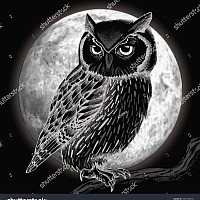
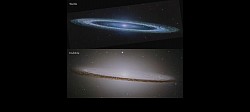
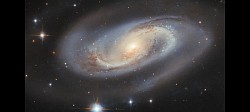
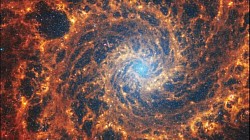
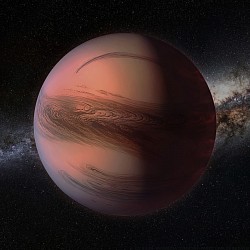
![NASA release image of Butterfly Star. • To whom we beneath & what is benezth us or is it like the singularity of particle by / over in mixed fraction [as 2 integer 2 by / over 4].](images/th/sd_691578fcce43a.jpg?no_cache=1763101203)
![QSO J0529−4351 (SMSS J052915.80−435152.0) is a quasar, 12 billion light-years away in the Pictor constellation, notable for being the most luminous object ever observed at roughly 500 trillion times the luminosity of the Sun. The black hole at its centre has a mass of approximately 17 billion solar masses, and accretes around one solar mass per day. In a Gaia DR3 data set published on 13 June 2022, QSO J0529−4351 was assigned a 99.98% probability of being a star in the Milky Way via an automated analysis.[1] However, the quasar was identified as one using the Very Large Telescope of the European Southern Observatory; the discovery was announced on 19 February 2024.brightest of its kind most luminous object ever observed contains fastest growing black holeThe mass of the black hole is estimated at 17 billion solar masses, and the total bolometric luminosity is 1048.37 ergs per second.In September 2025, the black hole was found to have a mass of only equivalent to one billion suns, making it much smaller as expected, compared to the previous observation in 2024.](images/th/sd_691dc09ea5e92.jpg?no_cache=1763561138)

![🦸🏽♀️ DD Depiction Disclaimerized 🦸🏽♀️ PRIDE = Group of Lions. 🧙♀️ The square circle ≈ E$q ≈ $? ≈ A title of respect for a member of the English gentry ranking just below a knight; placed after the name. ⛔ 2} 🦜≈ ⏺️ ≈ @bi$ ≈ Diatribes ; Diatomos ; Biformed (Janus ≈ Roman mythology) the Roman god of doorways and passages; is depicted with two faces on opposite sides of his head. ) ; Dialectic ; Dilektike tekhne (Art of debate) ) ; 🟢 3} 🦚 ≈ Vegetation {An abnormal growth or excrescence (especially a warty excrescence on the valves of the heart)} [(pathology) an abnormal outgrowth or enlargement of some part of the body] ≈ Extended Middle Finger(or any other extended organ) touching the circle & square both. ≈ 4} 💠🦉≈ Dislocation of leg / limb below knee or Foot from Ankle. ≈ Transfiguration ≈ A striking change in appearance, character or circumstances.(= metamorphosis). ⭕ A patter of six feet for Triplet.](images/th/sd_671bb88d715ed.jpg?no_cache=1762702728)
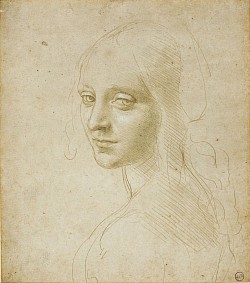
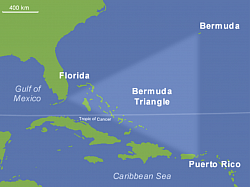
![The Devil's Sea [Japanese: 魔の海, Hepburn: Ma no Umi(translated as devil sea, troublesome sea, or dangerous sea)], also known as the Devil's triangle, the Dragon's Triangle, the Formosa Triangle and the Pacific Bermuda Triangle, is a region of the Pacific, south of Tokyo. The Devil's Sea is sometimes considered a paranormal location, though the veracity of these claims has been questioned.](images/th/sd_665eac1561c1c.png?no_cache=1717487834)
![Marie Byrd Land (MBL) is an unclaimed region of Antarctica. With an area of 1,610,000 km2 (620,000 sq mi), it is the largest unclaimed territory on Earth. Area map of : Marie Byrd Land, Etymology: Wife of explorer Richard E. Byrd , Coordinates : 80°S 120°W ,Continent : AntarcticaIt was named after the wife of American naval officer Richard E. Byrd, who explored the region in the early 20th century. The territory lies in West Antarctica, east of the Ross Ice Shelf and the Ross Sea and south of the Pacific Ocean portion of the Antarctic or Southern Ocean, extending eastward approximately to a line between the head of the Ross Ice Shelf and Eights Coast. It stretches between 158°W and 103°24'W. The inclusion of the area between the Rockefeller Plateau and Eights Coast is based upon Byrd's exploration. Marie Byrd Land is covered by the vast West Antarctic Ice Sheet (WAIS). The WAIS in Marie Byrd Land drains off the continent to the east into the Ross Ice Shelf via seven ice streams. Along the coast of the Southern Ocean and the Amundsen Sea, ice drains via glaciers, the major one being the Thwaites. The West Antarctic Rift System (WARS[39]) that evolved over the last hundred million years, includes all or part of Marie Byrd Land.](images/th/sd_66c1a7d6aa409.png?no_cache=1723968466)
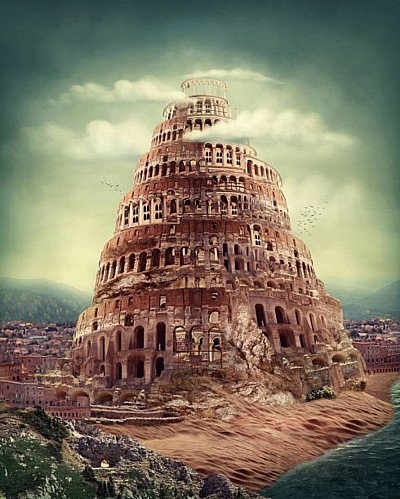
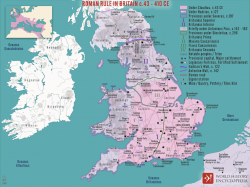
![Bible Map of route of Exodus of Israelites [Hebrews] from Egypt to The Promised Land . समाजशास्त्र में](images/th/sd_69129a4e4367c.jpg?no_cache=1764910321)
